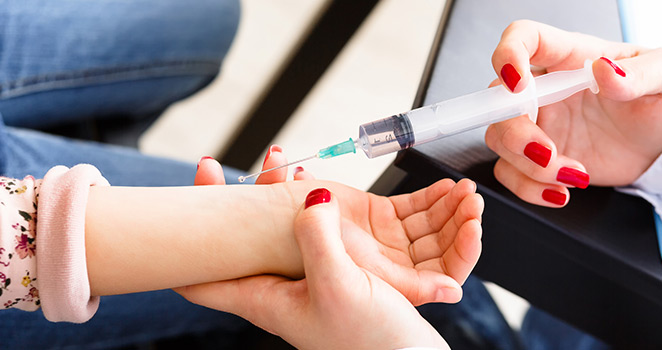Atrium Health Navicent Infectious Disease
Hospital Epidemiology and Infection Control

A licensed medical doctor, by the time he or she is practicing on his or her own, has received four years of baccalaureate education, four years of medical school, and three to nine years of residency training. With all this expertise, knowledge, and professional development, it is often surprisingly that medical malpractice often results from the most seemingly innocuous factors. Contamination owing to mistakes like not washing one's hands thoroughly enough, reusing of medical equipment, faulty sterilization equipment, and other non-medical mistakes contribute to a growing epidemic of infections in hospitals. The Centers for Disease Control and Prevention estimate that 1.7 million Americans are infected in United States hospitals each year. This number is more difficult to calculate abroad but is estimated to be much higher in developing countries. With shortages in physicians worldwide, it is difficult to expect thorough infection control and hospital epidemiology training, but it is a relatively cheap and resource-efficient way of preventing death worldwide.
Hospital care-associated infection, or a nosocomial infection, is an infection contracted while a patient receives care in a hospital, which the patient was not suffering from at admittance. A hospital care-associated infection can extend hospital stays, racking up health care costs for the patient and adding a huge burden to the already expensive healthcare system on a national level. They are also suspected to be responsible for the rise of antibiotic-resistant bacteria, an existential problem that may render much of our modern healthcare technology ineffective. Since the 1990s, the number of patients in hospitals suffering from antibiotic-resistant infections has ballooned from an almost negligible number to about 2.4% of the hospital population. There are myriad problems with dealing with antibiotic resistant bacteria, which arise from rapid mutation of bacteria in hospital settings due to the excessive prescription of antibiotics. Patients are rarely healthy enough to fight off infections without help, but when even traditional answers are ineffective, the difficulty of recovery is compounded even further. Fortunately, these infections, worsened by the advent of antibiotic-resistant bacteria, are preventable in three relatively cheap ways.
According to some infection control and hospital epidemiology journals, up to 32% of infections in hospitals can be prevented by better hand washing. In the United States and the United Kingdom, hospital facilities are required by law to make hand-washing facilities readily available and accessible to medical professionals. Most also expose their staff to infection control and hospital epidemiology training and a multistep hand washing technique that includes scrubbing for at least five minutes with warm water and antibacterial soap and drying with paper towels rather than a hot air dryer. Some hospitals have been known to require their new hires to sit for an infection infectious diseases and epidemiology quiz before starting their first day. With the relatively low cost of providing soap and hand washing facilities as compared to the cost of the complications of infection, the World Health Organization recommends several steps to increase the rate at which medical professionals wash their hands, even in developing countries. The World Health Organization recommends countrywide mandates of hand washing, along with reminders posted across hospitals. It recommends that governments provide healthcare facilities with alcohol-based antibacterial soap, which makes economic and financial sense on a countrywide level as it prevents costly infections. The World Health Organization also recommends that government's measure hand-hygiene compliance regularly so that infection prevention is made a priority and so that further uncompromised data can be collected.
The sterilization of the reusable tools used in medical care is also another leading factor in preventing infections in hospitals. Generally, reusable medical devices are autoclaved, which means that they are sterilized by high-powered steam, a process that is both economical and effective. However, autoclaving reusable medical devices correctly can prove difficult, even in wealthy nations like the United States. In order for autoclaving to be completely effective, the steam must reach every surface of the reusable medical device a hospital is attempting to sterilize and must reach a temperature of 250 degrees Fahrenheit. This kind of effective sterilization requires that hospitals make room in their budgets infection control and hospital epidemiology jobs that specialize in sterilization.
In addition, effective in killing microbes before they can infect is disinfecting hospital surfaces regularly. This is an even more cost-effective way to prevent infection that the sterilization of reusable medical devices and can be done by an untrained professional. Liquid chemicals that resemble those used domestically can drastically improve both the general cleanliness and a number of microbes on the surfaces of hospital surfaces. Alternatively, these surfaces (which include floors, railings, trays, call buttons or just about anything else that patients touch regularly) can be made with antimicrobial materials. When made with antimicrobial copper alloy, microbes survive for only up to two hours.
The Centers for Disease Control recommends that healthcare workers be vaccinated at least again the most common diseases, like hepatitis B, influenza, measles, mumps and rubella because the vaccination of healthcare workers is yet another important factor in preventing infections in hospitals. Given the recent backlash against vaccinations by the general public due to misconceptions about its correlation with autism, the numbers of infections have ballooned in certain regions of the United States. A similar trend can be observed in the hospital. Healthcare workers, who are exposed to ill patients the entirety of their shifts can be the vehicles of a host of bacteria. This can often be one of the most effective ways to combat the transmission of disease in hospitals, blocking one of the major entrances into hospitals.